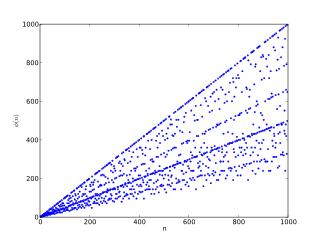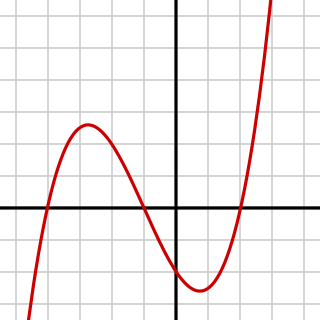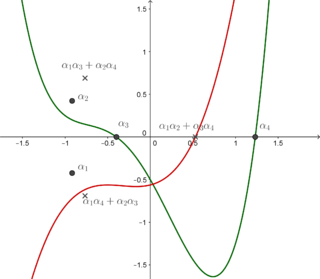 W
WIn mathematics and computer science, a canonical, normal, or standard form of a mathematical object is a standard way of presenting that object as a mathematical expression. Often, it is one which provides the simplest representation of an object and which allows it to be identified in a unique way. The distinction between "canonical" and "normal" forms varies from subfield to subfield. In most fields, a canonical form specifies a unique representation for every object, while a normal form simply specifies its form, without the requirement of uniqueness.
 W
WElementary algebra encompasses some of the basic concepts of algebra, one of the main branches of mathematics. It is typically taught to secondary school students and builds on their understanding of arithmetic. Whereas arithmetic deals with specified numbers, algebra introduces quantities without fixed values, known as variables. This use of variables entails use of algebraic notation and an understanding of the general rules of the operators introduced in arithmetic. Unlike abstract algebra, elementary algebra is not concerned with algebraic structures outside the realm of real and complex numbers.
 W
WIn mathematics, when the elements of some set S have a notion of equivalence defined on them, then one may naturally split the set S into equivalence classes. These equivalence classes are constructed so that elements a and b belong to the same equivalence class if, and only if, they are equivalent.
 W
WIn number theory, Euler's totient function counts the positive integers up to a given integer n that are relatively prime to n. It is written using the Greek letter phi as φ(n) or ϕ(n), and may also be called Euler's phi function. In other words, it is the number of integers k in the range 1 ≤ k ≤ n for which the greatest common divisor gcd(n, k) is equal to 1. The integers k of this form are sometimes referred to as totatives of n.
 W
WIn algebra, the free product (coproduct) of a family of associative algebras over a commutative ring R is the associative algebra over R that is, roughly, defined by the generators and the relations of the 's. The free product of two algebras A, B is denoted by A ∗ B. The notion is a ring-theoretic analog of a free product of groups.
 W
WThe freshman's dream is a name sometimes given to the erroneous equation (x + y)n = xn + yn, where n is a real number (usually a positive integer greater than 1). Beginning students commonly make this error in computing the power of a sum of real numbers, falsely assuming powers distribute over sums. When n = 2, it is easy to see why this is incorrect: (x + y)2 can be correctly computed as x2 + 2xy + y2 using distributivity (commonly known as the FOIL method). For larger positive integer values of n, the correct result is given by the binomial theorem.
 W
WIn string theory, K-theory classification refers to a conjectured application of K-theory to superstrings, to classify the allowed Ramond–Ramond field strengths as well as the charges of stable D-branes.
 W
WOmar Khayyam was a Persian mathematician, astronomer, philosopher, and poet. He was born in Nishabur, in northeastern Iran, and spent most of his life near the court of the Karakhanid and Seljuq rulers in the period which witnessed the First Crusade.
 W
WIn mathematics, a polynomial is an expression consisting of variables and coefficients, that involves only the operations of addition, subtraction, multiplication, and non-negative integer exponentiation of variables. An example of a polynomial of a single indeterminate x is x2 − 4x + 7. An example in three variables is x3 + 2xyz2 − yz + 1.
 W
WIn mathematics, a ratio indicates how many times one number contains another. For example, if there are eight oranges and six lemons in a bowl of fruit, then the ratio of oranges to lemons is eight to six. Similarly, the ratio of lemons to oranges is 6∶8 and the ratio of oranges to the total amount of fruit is 8∶14.
 W
WIn algebra, a resolvent cubic is one of several distinct, although related, cubic polynomials defined from a monic polynomial of degree four:
 W
WIn mathematics, a square is the result of multiplying a number by itself. The verb "to square" is used to denote this operation. Squaring is the same as raising to the power 2, and is denoted by a superscript 2; for instance, the square of 3 may be written as 32, which is the number 9. In some cases when superscripts are not available, as for instance in programming languages or plain text files, the notations x^2 or x**2 may be used in place of x2.